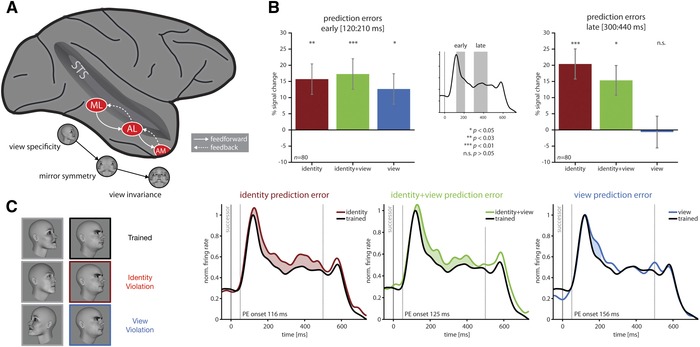Figure 5.

The macaque face processing system in IT and prediction error responses elicited from its constituent cortical areas (this figure was adapted from Ref. 92). (A) The macaque face processing network is composed of three face‐selective areas, each with its own functional specialization, arranged in a three‐level processing hierarchy. Although tuning to head orientation decreases from area ML via area AL to area AM, selectivity for facial identity across head orientations increases. 73 (B) Schwiedrzik and Freiwald 92 recorded single‐unit activity in ML in response to learned face pairs, where occasional deviant stimuli had a different identity, head position, or both. Although all three violations individually produced a significant early prediction error response, the late sustained response to orientation violations dwindled and disappeared, but the response to identity and combined violations remained significant. These findings suggest that early responses reflect mismatches along local tuning properties, but later responses reflect view‐invariant identity errors. Mirror‐symmetric view violations evoked smaller prediction errors in ML than nonmirror‐symmetric violations in the late phase. As the timing of this effect overlaps with the peak of mirror‐symmetric identity tuning in AL, this suggests that higher order representations are involved in suppressing prediction errors in the late phase. (C) However, the interpretation of these results is complicated by the coding scheme where the deviant stimuli were successors to untrained predictors rather than unexpected successors to trained predictors.
